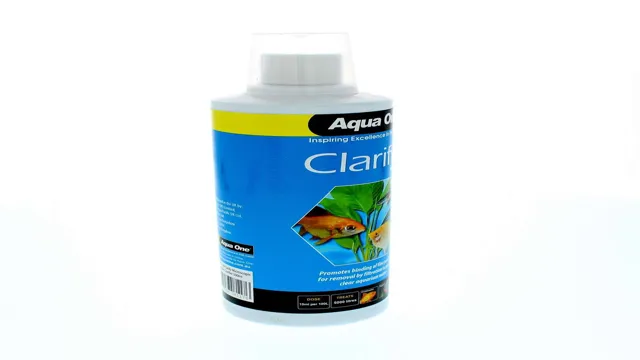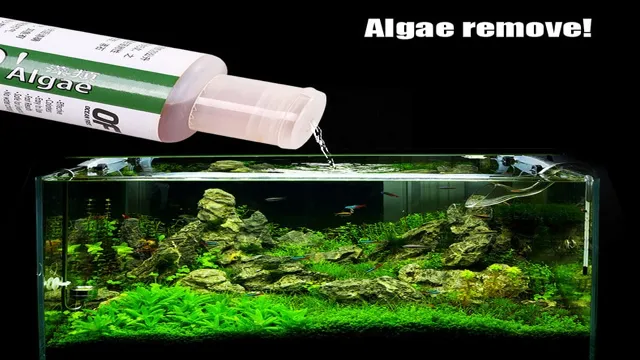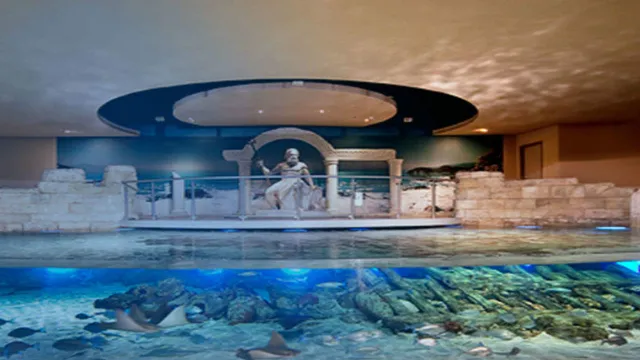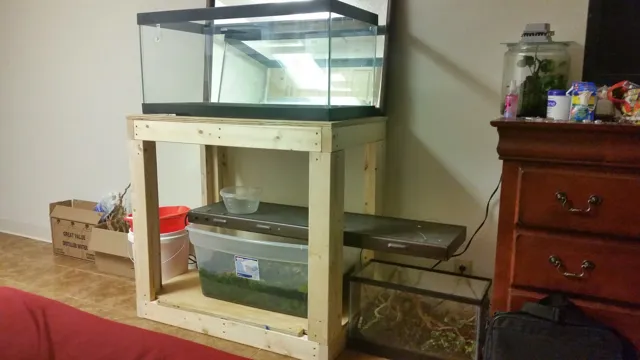Aquariums are a beautiful addition to any home, providing a serene environment to unwind and relax. However, one common issue that aquarium owners face is cloudy or murky water. This can be distressing not only for the aesthetics of the aquarium but also for the health of the fish.
One of the major causes of cloudiness in aquarium water is the buildup of debris on the surface. Dead plants, fish waste, food particles, and other debris can accumulate on the surface and cause the water to appear cloudy, thus hampering the clarity of your aquarium. So how do you maintain a crystal-clear water surface in your aquarium? It’s a simple solution, really – by clarifying the water surface.
Clarifying the water surface involves removing any debris or impurities that are visible on the surface, allowing the water to remain clean and clear. In this blog, we will discuss the various methods to clarify your aquarium water surface, from manual methods to equipment that helps maintain the clarity of your aquarium water. Whether you are a novice or an experienced aquarium owner, this blog will provide you with some valuable insights to keep your aquarium water surface crystal clear.
Let’s dive in!
Understanding the Problem
If you’re wondering how to clarify aquarium water surface, there are a few things you should consider. First, the buildup of organic matter, like fish waste and uneaten food, can contribute to cloudy water. Investing in a good filtration system is a great first step in preventing this buildup.
Another potential issue is surface agitation – or lack thereof. If your aquarium water is stagnant, it can be a breeding ground for bacteria and algae, which can contribute to cloudiness. Consider adding an air stone or other device to increase surface agitation and promote oxygen exchange.
Finally, if your aquarium is near a window or other bright light source, excessive sunlight can also contribute to algae growth and cloudiness. Be mindful of the location of your aquarium and consider adding a cover or adjusting the lighting schedule to prevent this issue. By addressing these potential causes, you can help clarify your aquarium water surface and maintain a healthy environment for your fish.
Causes of Cloudy Water
Cloudy water is a common problem in households and can be caused by a variety of factors. It can be caused by high levels of minerals, sediment, or debris in the water, which can lead to cloudy or turbid water. Other common causes include air trapped in the water, which creates bubbles that give the water a cloudy appearance.
Another cause of cloudy water can be due to algae growth, which can occur in areas with high levels of organic matter such as lakes or rivers. When it comes to addressing the issue of cloudy water, it is crucial to identify the cause and take the necessary steps to fix the problem. Failure to do so could lead to health risks, as well as damage to your plumbing system.
If you suspect that your water is cloudy due to a plumbing issue, it is recommended to seek the help of a professional plumber to diagnose and fix the problem.

Effects on Aquarium Ecosystem
The problem of inadequate aquarium maintenance can have serious repercussions on the overall ecosystem. It’s important to understand that every living organism in the tank is interconnected and relies on specific environmental conditions to survive. Neglecting proper cleaning and water changes can lead to a buildup of harmful toxins, bacteria, and waste that can harm or even kill your aquatic pets.
Poor water quality can cause stress and weaken the immune system of fish and invertebrates, leaving them more susceptible to disease. Additionally, algae blooms can quickly take over the tank, suffocating plants and animals and disrupting the balance of the ecosystem. To maintain a healthy and thriving aquarium, it’s crucial to regularly monitor water parameters and perform routine maintenance to ensure a stable and balanced environment for your aquatic pets. (See Also: How to Make a Shrimp Aquarium: A Comprehensive Guide to Building and Maintaining Your Own Shrimp Tank)
Methods for Clearing Water Surface
If you’re struggling with cloudy or dirty water in your aquarium, you’re not alone. It’s a common problem among fish owners. Fortunately, there are several methods available to help you clarify your water surface.
One popular solution is adding an aquarium water surface skimmer. This gadget removes any floating debris like leaves, uneaten fish food, and fish waste before it sinks to the bottom of the tank. Another solution is adding activated carbon to your aquarium’s filtration system.
This porous material helps to absorb impurities and eliminates any odor. Lastly, another common solution is performing regular water changes to your tank, removing any buildup of debris and replacing it with clean fresh water. By using these methods, you can keep a healthy and clear water surface for you and your aquatic friends to enjoy.
Surface Skimming
Surface Skimming When it comes to keeping your pond or pool clean, surface skimming is an effective way to remove leaves, debris, and other unwanted items from the water. There are several methods you can use to clear the water’s surface, including manual skimming with a net, using a surface skimmer attachment on a pool filter pump, or investing in an automatic skimmer system. Manual skimming works well for small areas or when there are only a few leaves on the surface.
A surface skimmer attachment can be added to the pool’s filtration system, which sucks the water in and collects debris in a basket. Automatic skimmer systems are ideal for larger ponds or pools. These systems float on the water’s surface and use a built-in motor to circulate and clean the water continually.
A well-maintained surface will not only look better but can also help improve your water’s chemistry by removing organic matter that can cause issues with algae growth. Incorporating surface skimming into your routine maintenance practices will make pool or pond ownership much more enjoyable for you and your guests.
Potential DIY Options
If you’re looking for DIY methods for clearing the water surface, you’re in luck because there are quite a few options available to you. One of the simplest methods is to use a skimmer net to physically remove any floating debris or vegetation. You can also use a pool vacuum or a leaf blower to remove any debris that may have sunk to the bottom of the pool and is now floating on the surface.
Another option is to use a pond or pool skimmer, which will do a more thorough job of removing debris and can be especially useful if your pool or pond has a large surface area. Finally, you may want to consider investing in a pool or pond aerator, which can help to oxygenate the water and promote a healthier environment for fish and other aquatic life. By incorporating one or more of these methods into your regular maintenance routine, you’ll be well on your way to enjoying a crystal-clear body of water all season long.
Use of Chemicals
Chemical treatment of water bodies is a common practice to address the problem of sludge and algae growth on the surface. Some of the chemical treatments may include copper sulfate, algaecides, and herbicides. The use of chemicals is a controversial method and can have potential environmental and health risks.
Copper sulfate can produce toxic levels of copper in the water over time, affecting fish and other aquatic organisms. Algaecides can also be harmful to aquatic plants, and herbicides may create long-term damage to the water body. One way to reduce the use of chemicals is through the use of mechanical methods such as the use of dredges and aeration systems. (See Also: How to Make DIY Aquarium Substrate: A Step-by-Step Guide.)
These methods allow for the removal of organic material or sludge, which can inhibit the growth of algae. Additionally, aeration systems can increase the dissolved oxygen in the water, supporting the growth of desirable aquatic plants. Overall, using mechanical methods can be a more sustainable approach to clearing water surface compared to chemical treatments.
Preventative Measures
If you’re struggling with murky aquarium water and unclear surfaces, there are preventative measures you can take to keep your tank looking crystal clear. First and foremost, make sure to not overfeed your fish. This can cause an accumulation of waste, leading to cloudy water.
Additionally, performing regular water changes and using a high-quality filter can help remove debris and maintain water clarity. Another effective method is adding live plants to your aquarium. They naturally absorb nutrients that contribute to algae growth and can help reduce excess waste.
Lastly, limit the amount of direct sunlight your tank receives as this can also encourage algae growth. By implementing these preventative measures, you can maintain a healthy and visually appealing aquarium for you and your fish to enjoy.
Regular Water Changes
One of the most important things you can do to keep your aquarium healthy is to perform regular water changes. These changes help prevent a buildup of harmful substances in the water, such as ammonia and nitrites, that can be detrimental to your aquatic pets’ health. Moreover, these substances can lead to a range of problems, from fin rot and swim bladder disease to respiratory problems and death.
By regularly removing a portion of the water and replacing it with fresh, conditioned water, you can help ensure that your fish and other aquatic animals have a safe, healthy environment in which to thrive. Aim to change around 10-15% of your aquarium’s water every week, using a siphon or similar tool to remove debris and waste from the substrate and decorations. You’ll be amazed at how much clearer and fresher your tank will look after each water change!
Decreasing Overfeeding
If you’re worried about overfeeding your pets, there are preventative measures you can take to ensure your furry friends stay healthy. One important step is to provide them with a proper diet and only feed them the recommended amount. This can help avoid the temptation of giving them extra treats or table scraps, which can add up quickly over time.
Additionally, establishing a feeding schedule can help regulate their intake and prevent them from becoming too hungry between meals. It’s also important to monitor their weight regularly and adjust their diet accordingly if needed. Remember, just like humans, pets can overeat and gain weight quickly, which can lead to a variety of health problems if left unchecked.
By taking these preventative measures, you can ensure your pets stay healthy and happy for years to come.
Conclusion
In conclusion, clarifying the water surface of your aquarium might not seem like the most glamorous of tasks, but it’s essential for keeping your aquatic pets happy and healthy. By implementing some of the above strategies, such as installing a surface skimmer or conducting regular water changes, you can ensure that your aquarium’s water remains crystal clear and inviting. So don’t let unsightly debris and pollutants muck up your underwater ecosystem.
Remember, a clean surface means a happy fishy populace!” (See Also: How to Aquarium: A Beginner’s Guide to Setting Up and Maintaining Your Fish Tank)
FAQs
Why is my aquarium water surface not clear?
There could be several reasons, such as overfeeding the fish, lack of water circulation, and accumulation of waste or debris.
How can I improve water circulation in my aquarium?
You can use a water pump or a powerhead to improve water circulation, as well as adjusting the position of your filter outlet.
Can too much light make the aquarium water surface murky?
Yes, too much light can stimulate the growth of algae, creating murkiness in the water surface. Be sure to keep the lighting duration and intensity balanced.
How often should I change the water in my aquarium?
It depends on the size of your aquarium and the number of fish you have. In general, you should change 10-15% of the water every week.
What other ways can I reduce debris on the water surface?
You can use a protein skimmer, which removes organic waste from the water, and a surface skimmer, which collects debris from the water surface.
Can inadequate filtration cause murky water surface?
Yes, inadequate filtration can lead to a buildup of waste and harmful bacteria, creating a murky water surface.
Are there any natural methods to clear the water surface in an aquarium?
Yes, adding live plants to the aquarium can absorb excess nutrients and keep the water clean. You can also try using activated carbon, which absorbs impurities from the water.







